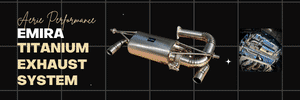Interesting video. What he's not taking into account, or at least he didn't say it, is your ability to accelerate (i.e. 0-60) is a function of weight to power ratio, and tire traction. Assuming tire traction is whatever your tires can handle, your weight to power ratio can be improved by reducing weight. This makes it easier for your car to get moving. The extra benefit of unsprung rotating weight allows you to make approximately similar improvements, without having to remove as much static weight. This is where the benefit ratio came from.
It takes power to turn the driving wheels, and get the weight moving. If you make it easier to turn the driving wheels, you can get moving quicker even if the car body weighs the same. You make it easier to turn the driving wheels (unsprung rotating weight) by reducing that weight, which is typically smaller amounts than removing body mass weight. This is the ratio effect. Both will improve your acceleration, but it's typically easier to remove unsprung rotating weight, which also has additional benefits that just removing body weight alone doesn't provide.
In addition to acceleration and braking, there's also the need to control the vertical movement of weight. If you have a 50 lb wheel that suddenly deflects upward, the spring and shock has to manage that, which takes time. If you reduce that weight to 35 lbs for example, the same spring and shock has less mass in motion to control, so it can control it quicker. It's like in baseball where a batter is standing in the on deck circle, swinging 3 bats. He's tuning his muscles to manage that weight, but when he gets up to bat, he only uses one bat, but since his muscles were just tuned to manage 3 times that weight, they can now swing one bat quicker. That same reflex speed works on car suspensions, which is why it's beneficial to reduce wheel and brake rotor weight. There are more benefits than just acceleration and braking.







